If the events of recent months have taught us anything, it’s that businesses need to find creative and effective ways of ensuring productivity. COVID-19 highlights the importance of designing virtual workplaces that keep employees engaged, even in the toughest of times.
The idea of building a team remotely isn’t a new one. It’s about giving staff all they need to ramp-up and contribute to your business as fast as possible, without distance becoming a hurdle. Question is, how can you use video for remote onboarding in your business?
In this blog post, I’ll show you how to use video for remote onboarding. I’ll give you nine types of videos (with examples) that any business can produce and share five tips you can use to strengthen your video content and remote onboarding program.
Before we dive into the how, let’s look at compelling evidence that supports video as the most efficient remote onboarding tool.
Boost your team’s efficiency with Hubstaff's productivity tools
Here’s why video is essential for remote onboarding
Video is more than a tool of convenience or trial communications medium. It’s a staple for forward-thinking brands.
Here a few practical applications where that show video can help your brand achieve more:
Faster assimilation
Today, the speed at which your organization moves determines its success. When it comes to remote onboarding, having your team up and running as soon as possible is essential. Video training (live and recorded) helps brands accelerate new staff learning curves.
By integrating free video editing software into the creation of training materials, you can make these resources more engaging and tailored to your organization’s needs. With access to a library on how to perform mission-critical tasks and product training, new employees can quickly learn how to contribute to your organization.
Support face-to-face onboarding
There is no dismissing the importance of employee onboarding. A report by G2 shows that 29% of HR employees see onboarding is the biggest challenge they face when trying to improve employee engagement. What’s more, one in 25 employees leave their jobs due to poor onboarding practices.
Video can be used to elevate your onboarding process. It can be used as a supplemental tool for face-to-face training for new starters, something that can be referred back to when needed.
In the recruitment process
Finding the people to join your team can be touch-and-go. CVs often indicate education levels and a list of achievements, but seldom hint at who your candidates really are. As part of your recruitment process, include the requirement for candidates to create a video recording. Have them answer specific questions that are beyond the scope of typical education and achievements listed on their CV. You can focus on topics like personal interests, hobbies and goals to get a better sense about who the real person is behind the CV.
Bridge the gap with new starters
Joining a new organization presents knowledge and culture learning curves for more new employees. Video can help shorten both. Through regular video calls with team members (think mentors, managers and team meetings), new staff will gain more experience and learn how to navigate your organization’s unique cultural dynamic.
Set your team up for success from day one.
Streamline your remote team onboarding with our comprehensive checklist. Fill out the form below to get it.
How to use video for remote onboarding
As you can see, you really can produce videos for anything and everything that your team needs to get the job done.
Here are nine specific examples of videos you can create.
1. About your company
Think of videos that explain the history, mission, and vision of your business.
In this example, Dropbox uses puppets to share what makes the brand special and how the company’s work impacts the world. It’s a fun take on helping people (and new team members) learn about the brand.
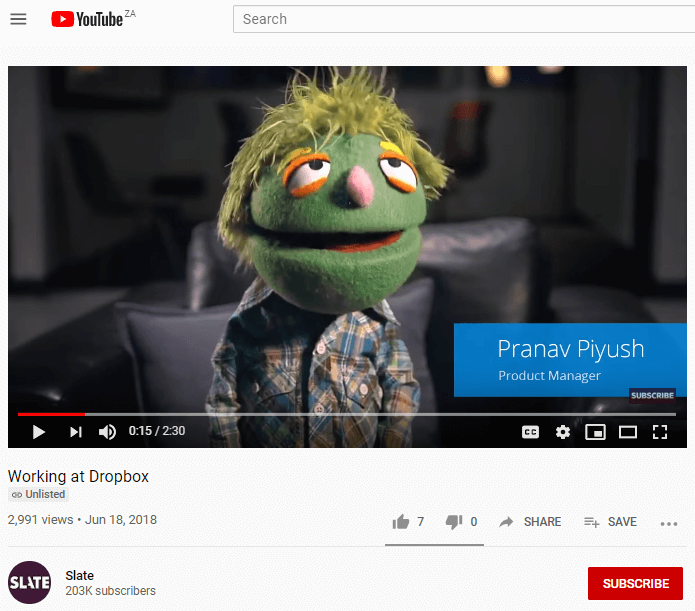
2. Share your organogram
Often, new hires aren’t sure who to ask for help. A video on your organizational structure and another that introduces your leadership team should do the trick.
In this example, Biteable shows how simple and straightforward an introduction to your organization and its leaders can be.
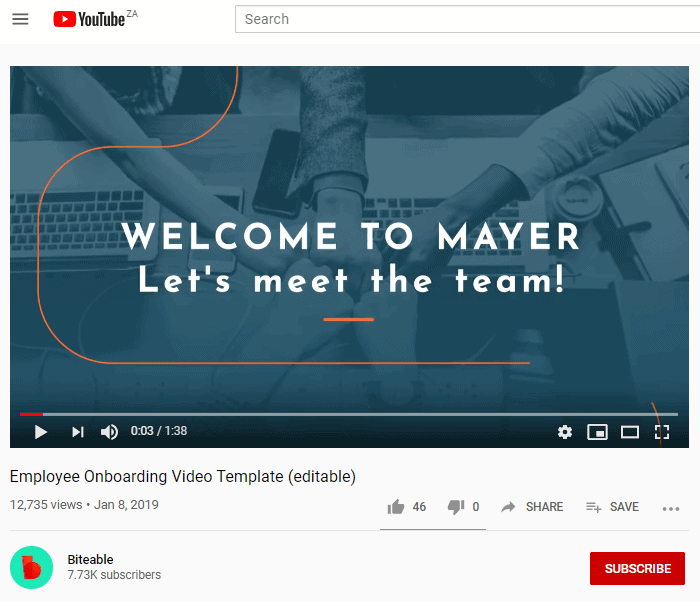
3. HR induction
HR videos are important. They help employees that understand rules of conduct, values, and how to play their part in your organization.
They can also be used to explain how paid time off and sick leave work, and address any immediate concerns new hires might have such as benefits, payroll, and more.
Another benefit of pre-recorded HR videos is that they can always be referred back to for clarity.
In this example, video production company PowerPlus Safety shares what an introduction video can look like when planned and produced professionally. It covers all the key points new hires should know, ensuring that they know how to navigate their new workplace.
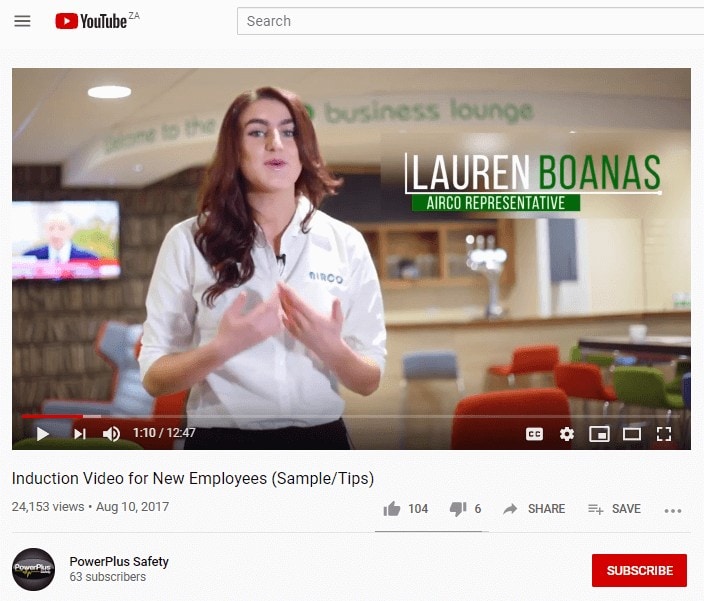
Watch the video (Start from 59 seconds).
Subscribe to the Hubstaff blog for more tips
4. Announcement videos
Save time by creating regular announcement videos. Record and share all-hands meetings, product updates, and team meetings.
In this example, Vidyard CEO Michael Litt explains work-from-home protocols in light of COVID-19.

5. How-to videos
How-to videos are more practical and designed to provide step-by-step instructions on how to perform tasks. As with all recorded content, these videos can be used for reference at any time, helping your employees quickly become familiar with mission-critical tasks.
In this example, Vidyard’s finance team shows how to complete an expense report.
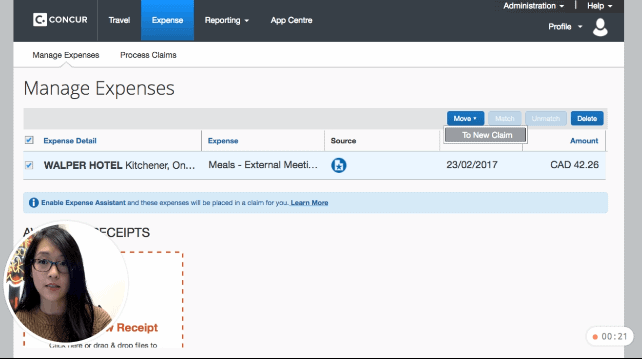
6. Product training videos
Product training videos can be used for both initial training and ongoing education. Another strong value-add of product training videos is that they can be viewed whenever employees have time, allowing staff to maximize productivity.
Norwex is a manufacturer of environmental cleaning products. In this training video presented by VP of Sales, viewers learn what makes their product special.

7. Video calls
New hires often experience uncertainty during the onboarding process.
Video calls can help with that. By using a combination of formal one-on-one calls and quick informal catch-up video calls, new team members will be able to address concerns, gather advice, and begin to develop the confidence they need to do the best work.
8. FAQs
Joining a new organization often presents a large learning curve, creating a long list of questions. By providing a video FAQ solution, new staff will know exactly where to go for answers.
Watch “What is Marketing Automation?”
9. Troubleshooting videos
Like FAQs, troubleshooting videos are crucial for successful onboarding. They can help boost productivity by saving staff from pausing mid-task to engage another person for help (and slowing their productivity).
Troubleshooting videos can be used for almost any recurring stumbling block for new hires.
Loom is a video recorder that helps teams communicate, learn and present information. In this video, Jessica easily communicates and shares complex design ideas with the team.
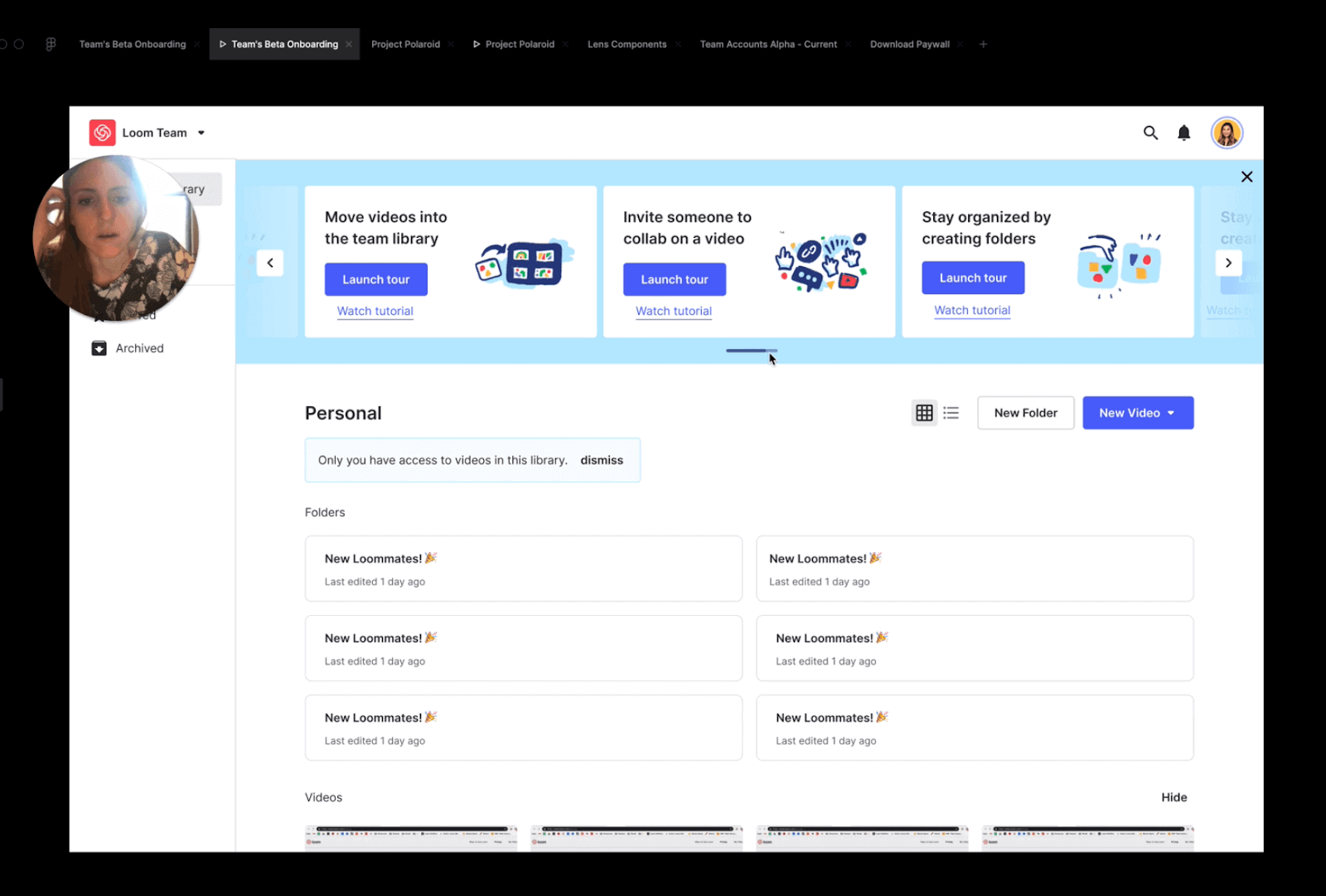
5 tips for creating effective remote onboarding videos
Getting started with video can be a little daunting. It may not be easy to figure out where to start, or how to make engaging and effective videos that serve your organization.
Here are five tips that can help.
1. Plan like a pro for pre-recorded content
Before you hit record, establish the purpose of your video. Ask yourself what the video should help the viewer achieve or better understand by the time they’ve completed it.
Knowing what your objective is will help you create clear and concise messages that are effective.
2. Promote a video-first culture
Creating a video-first culture won’t happen overnight. It’ll take time and consistency. It will also take participation from staff to show that video is both easy to use as a tool and can be highly beneficial for all. A smart way to get employee buy-in is to incentivize the creation of videos.
By introducing a reward system for video content produced and shared with the rest of the organization, you can begin building a library of helpful content. You’re also able to empower staff to produce video content that helps the rest of the organization achieve more.
3. Make recordings easily accessible to all
Remote onboarding only works if people can access video content easily. Whether your videos are stored locally or made available through an over-the-top video service, ensure everyone knows how to locate your videos. Also, show people how to access your video library, how to update and add content, and how to share new videos with the rest of your business.
4. Make video your new open-door policy
Let people know that it’s okay to have video calls at the drop of a hat, especially if they’re new. But also set rules of engagement.
For example, if you’re in do not disturb mode, block your calendar from meetings.
5. Have fun
Video, while the perfect tool for remote work and communication, doesn’t need to be limited.
Empower your team to have fun with video as a positive means of engaging with each other. After all, it’s still human-to-human interaction, so be sure to sprinkle a little personality here and there.
Summary
Video is a powerful tool. When it comes to remote onboarding, it’s capable of streamlining your onboarding process and welcoming new team members. For brands to get the most out of video for remote onboarding, they must commit to it. Create a video-first culture that empowers staff with all the tools they need to embrace video and do more.
Most popular
The Critical Role of Employee Monitoring and Workplace Security
Why do we need employee monitoring and workplace security? Companies had to adapt fast when the world shifted to remote work...
15 Ways to Use AI in the Workforce
Whether through AI-powered project management, strategic planning, or simply automating simple admin work, we’ve seen a dramatic...
The AI Productivity Panel: Lessons From Leaders on What’s Working (and What’s Not)
When I moderated this AI productivity panel, I expected a solid conversation. What I didn’t expect was the flood of real-world i...
Employee Performance Dashboards: Templates, Tools, and Best Practices
Keeping track of how your team’s really doing can be tricky. Spreadsheets pile up, one-on-ones only tell part of the story, and...




